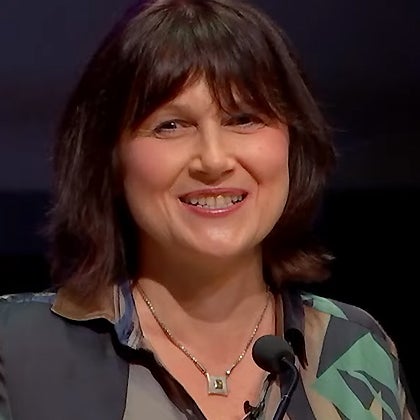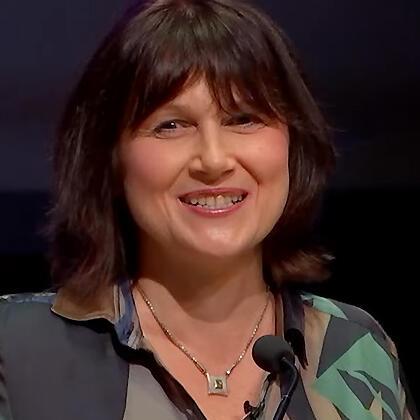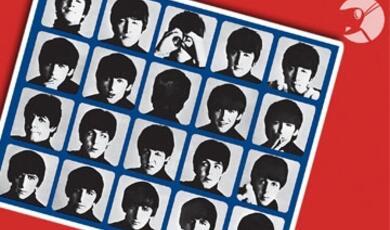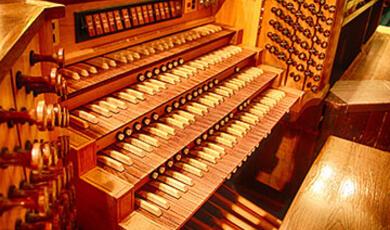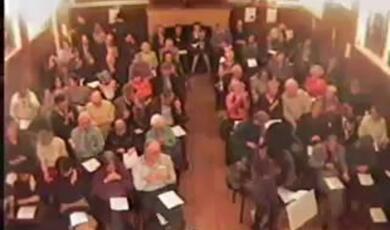Musical Cadences
Share
- Details
- Text
- Audio
- Downloads
- Extra Reading
Composers of tonal music, from the 17th century through to the latest jazz tune or film score, think mainly in terms of how their chords succeed each other, rather than taking chords in isolation.
We will investigate the most important succession of chords in Western music, the cadence. Cadences are a kind of punctuation, dividing music into sentences or periods. They are also responsible for creating a sense of relief or suspense.
Download Text
Musical Cadences
Professor Marina Frolova-Walker
26th January 2023
Punctuating Music
Just as in speech, the length of phrases in song melodies or liturgical chants is limited by the length of the human breath. The 9th-century treatise Musica Enchiriadis, for example, tells us that
“The segments of a song are its colons or commas, which divide up the song by their endings.”
Note that the words “colon” and “comma” here mean clauses of different length, rather than the punctuation marks that divide them. Around 1100, the theorist John of Affligem developed an analogy between music and the doctrine of punctuation in an attempt to describe how pieces and their constituent parts can conclude:
“When a melody rests in a suspended manner, a fourth or a fifth from the home note, it is a colon. When the melody is led back to the home note in the middle [of the phrase], it is a comma. When it arrives on the home note at the end [of the phrase], it is a period.”
Jacobus of Liege (ca.1330) used the term cadentia to describe the progression of an imperfect consonance to a perfect consonance – either a 6th moving out to an octave, or a 3rd moving out to a 5th. Around 1500, Nicholas Wollick attempted to create a direct parallel between particular melodic patterns and punctuation marks (virgula, comma, colon and interrogativum). In the next few decades, German theorists described patterns of closure within polyphonic textures. The descriptions were not yet couched in terms of chord progressions, but the modern notion of three sonorities was already in place: there was to be an ultima, a penultima and an antepenultima. Already present here is also the logic of the construction, which runs backwards; in more modern terms, the last chord is paramount as the target, and the limited options for the preceding two chords will flow from the choice of this last chord.
Our earlier medieval theorists were discussing melodic patterns only, whereas the late medieval theorists were discussing patterns emerging from simultaneous combinations of voices. But we can still generalise: the endings of phrases matter, and they tend towards certain formulas that allow them to be recognised easily. We also see that patterns can imply imperfect closure (in the middle of a phrase), as against perfect closure (at the end of a phrase). Musicians learn these formulas, while other listeners pick them up informally, but either way, the formulas create expectations that composers can realise or sometimes thwart. This is how we can often tell when a phrase is about to end, or whether we are still in the middle. Common musical metaphors of journeying, such as “departure” or “arrival” make good sense in this context.
A Cadence Everyone Knows
To explain the construction of a cadence of all, I will use one of the best-known harmonised tunes: “Happy Birthday to You” (originally composed as a kindergarten song in the 1890s, under the name “Good morning to all” by the sisters Mildred and Patty Hill). Just after you sing the name of your birthday friend, the last phrase brings the song to an unambiguous close with a cadence formula.
Let us analyse this in reverse order. The final chord (on the word “you”) is the major triad on Note 1 of the scale, called Chord I or the Tonic triad (see Lecture 1). The penultimate chord (on “to”) built on Note 5 of the scale is Chord V, or the Dominant (specifically, a Dominant 7th – see Lecture 2). The bass voice here jumps down from Note 5 to Note 1.
The chord that precedes the dominant seventh (on “Birthday”) is an interesting one. It has the same notes as a Tonic triad, but it is in second inversion (see Lecture 2), which prevents it from sounding like the completion of a phrase. It functions instead as a decoration of the dominant chord, and it was so often used in the 18th century that by Mozart’s time, it was a recognisable part of the formula at cadences, telling listeners that they were almost, but not quite, home, and it continued in this role through the 19th century. The only name it is known under is the technical term “cadential 6/4”).
Immediately preceding all this is the chord on the word “Happy”. This is a “pre-dominant” chord, in this particular case, a chord II, although the category contains a few other options. So, we have all three stages of the cadence formula, together with a decoration of the middle stage. Following the logic in the usual reverse order, we have the Tonic chord at the end (on “you”); the Dominant chord (with decoration) in the penultimate position (“birthday to”); and a pre-dominant chord in the antepenultimate position (“Happy”). This provides the tune with a clear “full-stop” at the end.
Cadences and Cadenzas
Closing formulas as recognisable as our “Happy Birthday” cadence start to appear in the late 1500s. Monteverdi gives us some good examples, as in the chorus “Vanne Orfeo” at the end of his opera L’Orfeo. By the early 18th century, there was a wealth of different formulas that implied varying degrees of finality. Later in the century, there was a simplification in this area, and the “cadential 6/4” became a standard feature. There was a general lengthening of the time given to each chord, which meant that the same formulas could be dressed up with a greater variety of melodic or textural complications. Attentive listeners can hear through these complications to detect the cadential formula. The final cadential formula could also appear some time before the end of a movement, followed by formal reiterations of the Dominant and Tonic chords – this behaviour signalled the end of a large section or a whole movement. In the first movement of Mozart’s “Sonata facile”, for example, the cadential formula at the end is followed by three further bars of Dominant and Tonic alternation. We find a long trill in the right hand on the Dominant 7th chord before it resolves into the Tonic. Now let us work our way backwards from the trill, following the usual reverse logic of the cadential formula. Immediately before the trill is the “Birthday” chord, the cadential 6/4, marked by a fast scale in the right hand, ascending and descending – this could have been merely generic material, but it actually functions as a final reference to thematic material from near the beginning of the sonata. Two bars before that, we have the pre-Dominant chord II, as in the Happy Birthday formula. In between, we have a striking chord of tension and instability, of a type that we will tackle in Lecture 4 (looking ahead, the name of this type is the “diminished 7th” chord). The whole cadential formula had already appeared in a different key at the end of the movement’s first section, a few minutes earlier. In the final version, the main harmonic difference is the addition of the tense chord, and melodically, we have the addition of the thematic scale material – Mozart evidently considered these sufficient to promote this movement-ending passage above the earlier section-ending version.
At this time, improvisation at the keyboard, whether piano, harpsichord or organ, was flourishing. In cases where the performance largely followed a score, there were still opportunities for improvisation over these cadential formulas. Taking advantage of the new propensity for lengthened chords, the improviser would fill out each chord with a long line of fast notes, while the listener could still follow the harmony, thanks to the familiarity of the now more restricted cadential formulas. This was the practice known as the cadenza. Although this is merely the Italian word for “cadence”, we will use it only for the stretched-out cadential improvisations, while keeping the English word “cadence” as our general term. The young Mozart wrote on this topic when his travels took him to Mannheim, which was then a major musical centre. He offered to play the organ at mass, “just for the fun of it”:
“I entered during the Kyrie and played the end of it. After the priest had intoned the Gloria, I played a cadenza. Because it was so different from the cadenzas that were common here, everybody turned around, especially [Ignaz] Holzbauer.”
Holzbauer was an eminent composer two generations older than Mozart. It is likely that Mozart planned his digression precisely to catch the attention of Holzbauer. We cannot know exactly what Mozart played, but it was some kind of elaborate embellishment of a cadential formula, with the usual pre-dominant, dominant and tonic chords. Heads turned, perhaps, at the very inclusion of such a passage, or at the rapidity of the improvisation, an innovation of Mozart’s, or some stylistic elements that were known in Salzburg but not in Mannheim – or indeed any combination of these factors. Whatever it was, Mozart got the result he wanted.
Improvised cadenzas became a standard feature of the classical concerto form: the orchestra would grind to a halt, leaving the soloist to show off. In the largest cadenza, which appeared near the end of concerto first movements, the orchestra would always grind to a halt on the cadential 6/4. From this point, the soloist would improvise a long harmonic digression that led eventually to the Dominant chord, which was always marked out with a long trill to signal to the orchestral players that they were about to re-enter. In Mozart’s concertos, the score is therefore incomplete, since Mozart and other professional pianists were capable of improvising a suitable cadenza that was adequate to the task (“improvisation” does not necessarily exclude a certain amount of planning). Mozart wrote out some cadenzas in full for inexperienced pupils to perform, but for some of his most famous concertos, there is nothing. On many occasions, later pianist-composers notated and published their own cadenzas to fill in the gaps in these concertos, and the need for these increased as the art of piano improvisation declined during the course of the 19th century. Mozart’s Concerto No. 20 in D minor is often performed with the cadenza that Beethoven supplied. While a handful of pianists today compose their own cadenzas, true improvisation is generally considered too risky, even by the very few who might be capable of it. By the mid 19th century, it was customary for composers to provide their own cadenza as part of the score, and no pianists think of replacing the cadenza of a Brahms or Rachmaninov concerto with one of their own. Apart from functioning as a harmonic digression between the orchestra’s cadential 6/4 and the end of the cadence (with the Dominant trill), there are other requirements. Obviously enough, pianists are expected to take advantage of the opportunity to display their virtuosity. The cadenza will often include an unpredictable and even fantastic element, with strange pauses, abrupt changes of key and sudden lunging towards the top or bottom extremities of the keyboard. The cadenza should also make reference to several themes from the movement – in the days when they were improvised, this prevented pianists from using a ready-made all-purpose cadenza. Strictly speaking, the large-scale form of the movement would remain correct if the cadenza was omitted: then, the orchestra’s cadential 6/4 would give way immediately to the pianist’s Dominant trill, followed by the orchestra’s Tonic and the remainder of the closing section. The cadenza is like a huge bracketed clause extraneous to the main business of the form. But still – what a disappointment that would be!
Less extensive cadenzas appear elsewhere in concertos: the finale often includes a couple of these. In such cases, the harmonic position in the cadential formula can vary, and the improvisation may consist only of a flourish on a single chord, without any thematic reference. These short cadenzas are also to be found in operatic arias and duets. In parallel with the disappearance of improvisation in the concerto, operatic writing also became more restrictive. From Rossini onwards, operatic composers complained of singers spoiling arias through tasteless improvisation that put virtuosity before musical integrity. By the middle of Verdi’s career, opportunity for improvisation had been eliminated. Granted, even with the notes determined, there is still much leeway for musical interpretation and also for gesture and staging – the improvisation of notes was only one of several areas that distinguished one performance from another.
Half-Cadences
So far we have been discussing cadences that function as a full stop. But what if something weaker is required – the equivalent of a comma? The aim here is to bring a musical phrase to a plausible end while implying that the piece must continue with at least one further phrase. The simplest option is the device known as the “half close” or “imperfect cadence”, which takes a cadential formula as far as the Dominant and then stops. Crucially, this cannot be a Dominant 7th, but only the triad form of the Dominant – a 7th indicated that at least one more chord was needed in the phrase. A balanced theme in the late 18th century commonly proceeded for four bars to an imperfect cadence, followed by another four-bar phrase ending on a normal cadence (when the distinction needs to be made, the latter can be called a “perfect cadence”). This construction is often referred to as a question and answer. In the late 18th-century style, these question-answer pairs were ubiquitous, allowing composers to play with listeners’ expectations. Beethoven, in the theme of his Eroica variations, could assume such familiarity with the question-and-answer construction that it could be understood with the bass line alone, leaving listeners to supply the harmony in their minds. Even on a first hearing, anyone familiar with these constructions can follow the hints and imagine where the imperfect and perfect cadences occur.
Interrupted Cadences
There is even a type of cadence that in itself confounds expectations. This is named the “interrupted cadence”, or the “deceptive cadence”. This type occurs most commonly when a standard approach to the dominant is made, but the dominant is not followed by a tonic chord. The favoured choice, in such cases, is chord VI (the chord whose root is the sixth note of the scale). Interestingly, this chord is minor when the key itself is major, and vice versa. At the end of Mozart’s C-major Sonata, K. 330, there is just such an interrupted cadence, but since the form has reached its final stage, the surprise chord gives the effect of a momentary stumble just before the end. The music quickly recovers its poise and brings the Sonata to a close on the expected perfect cadence. Mozart uses interrupted cadences quite often, so a listener used to his habits will experience the surprise as a frisson rather than a jolt.
Although the Beatles are known for enriching the pop music of their times with various complexities, they would sometimes show that they were still capable of writing successfully in a simpler, more formulaic manner. One example is a playful song full of nonsense words, “Obladi Oblada”. Near the end, the straightforward chorus comes back one final time, and since the style is so simple, the first-time listener expects no surprises. But as with Mozart at the end of his Sonata, the harmony of the chorus is suddenly diverted into an interrupted cadence, and in the context, it does indeed come as a jolt. After a momentary pause on the unexpected chord, a new phrase deftly brings the song back to the main key and supplies the final perfect cadence. The interrupted cadence functions like a sly wink, as if to say to the audience “You didn’t really think we could go through a whole song without at least one little trick, eh?”.
Beethoven was always in search of the unprecedented, and in his famous Sonata in Eb major, “Les Adieux”, he turns to the interrupted cadence. As the name suggests, an “interrupted cadence” will divert music that is already underway. Beethoven, however, places his interrupted cadence at the very beginning of his Sonata, when it seems there is nothing to be interrupted in the first place. In order to make sense of this strange move, Beethoven uses a series of three intervals associated with the French Horns in orchestral music; the series clearly implies a tonic-dominant-tonic progression. The pianist’s right hand serves up the three intervals just as the horns would play them, but when Beethoven reaches the third interval, the left hand places the sixth degree of the scale below it, forming a chord VI, and therefore an interrupted cadence. The strength of the effect comes from the very strong expectations set up by the horn intervals. Beethoven, we might even say, is at one remove from the horn formula, not stating it as if it was interesting in itself, but using it as raw material to be recontextualised (and he does this in several different ways as the movement continues). The Sonata was dedicated to one of Beethoven’s aristocratic patrons, who was leaving Vienna because Napoleon’s troops were advancing towards the city. Many commentators however have noted the intensity of the emotions behind the opening “Farewell” movement (and also the later movements, “Absence” and “Reunion”), interpreting the narrative as a parting forced on two lovers. The three-event horn formula is even a good fit for the German word “Lebewohl” – the nearest in English would be “Fare thee well!” The interrupted cadence, making the third chord minor, suggests a degree of pain in the departure. But then Beethoven exceeds himself, and a little later, returns to the horn formula, and this time inflects it so that it reaches the flattened Chord VI, a shockingly beautiful move that leads to a quietly wrenching lament. The “normal” version of the progression appears only later, in the closing section of the movement.
We will draw our final example from Prokofiev’s “Classical Symphony”. This time, Prokofiev is at one remove from the interrupted cadence itself. His purpose in the Symphony is to evoke the language of the Viennese classics. At the same time, Prokofiev wanted the Symphony to sound like a piece of its own time, with a connection to the style that he was already forging for himself. In a letter, Prokofiev singles out Mozart as the main influence, but the third movement, a Gavotte, is closer to Haydn in its sophisticated musical wit. The movement had already been written as a piano piece, but Prokofiev thought that it fitted the spirit of the Symphony so well that he orchestrated it for the purpose. The Gavotte is a stately dance, and it begins in the proper manner, but the phrases keep ending on interrupted cadences. Normally, the “interruption” is followed by a return to the prevailing key, as Prokofiev knew well, but he deliberately “misunderstands” the device, and lets it send the music off into several different keys, so that the stately mood is progressively gives way to a kind of comic anarchy that still tries to keep up the pretence. Perhaps the wit would have been better appreciated by Haydn’s listeners, since the grandeur and intensity of much late- and post-Romantic music of the time was not a good training ground for the appreciation of musicianly wit.
Cadences in Love and War
Over the course of the 19th century, orchestral and piano sound became ever more imposing, and the pieces themselves lengthened drastically, acquiring a scale unknown in the time of Mozart. A cadence was no longer a handful of chords fitting one of the formulas. Instead, the progression could spread itself over several pages of the score, pushing the basic chords to the background, and filling the foreground with busy detail. The listener may have a vague sense that a culminating point is approaching, without knowing why. Toward the end of the century, even a crowd-pleasing piece like Tchaikovsky’s 1812 Overture displays this behaviour: a timpani roll is heard, and the basses settle on a note that remains in place for a surprisingly long time. Over this bass note, the French and Russian tunes battle it out, trying to claim all our attention. The bass note, though, is Note 5 of the scale, in other words, the root of the dominant chord. Over this dominant root, many different chords can be heard, but overall, this passage functions as the penultimate, dominant chord of a mighty cadence. The 1812 Overture being what it is, the clinching of the cadence signals the Russian victory. The war is over and the celebrations can begin.
The point is that the stretching of the cadence far beyond even Beethoven’s extreme measures was so thoroughly absorbed into the musical language that it could be found even when a composer was being frivolous. In a much more artistically ambitious piece by Tchaikovsky, his Fifth Symphony, the famous Andante cantabile slow movement is intensely beautiful music, and seems to depict some kind of love scene. And yet it is interrupted twice by terrifying warlike fanfares (taking up the “Fate” theme that had already featured in the first movement). This happens twice, the second time even more nightmarish than the first. Why the difference? The “Fate” theme is the same each time, after all. Tchaikovsky’s secret in creating a different impression each time lies in his choice of the moment for the outburst in relation to the progress of a cadential formula that is underway. The first time round, we reach a cadential 6/4 (in a minor key), while the musical details already convey agitation. We, the listeners, already expect trouble. The interruption comes before the cadential 6/4 can give way to the dominant chord, that is, before the progression of the cadence reaches the point of maximum tension. The chord that replaces the dominant is one that Tchaikovsky often uses for tragic climaxes (as we saw in Lecture 2). Still, the music is undoubtedly unsettling, and afterwards, the music needs some time before it can recover its poise and return to the love scene. The second time round, the details of the music remain calm, even tender, so there is no anticipation. Tchaikovsky also delays the interruption until the last moment, when the dominant chord is ready to pass peacefully on to the tonic. The passage seems to be much the same as an earlier phase of the movement, and that time, all went well. Our imagined lovers are perhaps about to fall into a slumber in each other’s arms. And that is exactly the moment Tchaikovsky chooses for the screaming intrusion. The result remains cruel and dismaying no matter how many times we have heard the Symphony.
In the second half of the 19th century, the stretching of cadences was most often featured in music about love and eros, whether in opera, or in instrumental music with a programme. The stages of the cadence are perceived by members of the audience, thanks to listening experience rather than any command of technical terms. Because of this, the lengthening of one or more stages creates a musical longing for the listener that serves as a counterpart for the longing of the lovers on stage, or in the programme. In effect, the composer can lead the audience to experience something akin to the feelings of the lovers. Let us look at Rachmaninov’s song “In the silence of the secret night”, which was inspired by events of his youth. At the age of 17, Rachmaninov was sent to stay with an aunt and uncle. There, he became infatuated with his cousin, Vera (who was 15 at the time), but the girl’s parents kept a careful watch on both of them. In the song, the protagonist is alone at night, obsessing over her hair and her bashful words. Eventually, his thoughts are reduced to a repetition of her name. The vocal line reaches its climax on a pre-dominant chord, but then the piano takes over, climbing to a higher peak over the cadential 6/4, with two-note motifs that seem to say “Ve-ra!”. When the dominant finally gives way to the tonic finally the vocal line descends to fit the chord of resolution. The piano, however, is in such ecstasies, that the momentum takes it past this point. It was entirely characteristic of Rachmaninoff to cultivate these effects with great composerly ingenuity. Consequently, it is altogether fitting that Rachmaninoff’s music is so strongly associated with erotic love, reinforced by films such as Brief Encounter that use his music to intensify the screen drama. Underlying this enduring success is Rachmaninoff’s treatment of the cadence, his ability to stretch the elements and control the timing so that the listeners melt into the lovers themselves.
One composer who has not been mentioned yet must be given his due. Both Tchaikovsky and Rachmaninoff were elaborating on the prior efforts of Richard Wagner, who, in his music-dramas, had perfected such treatment of harmony in association with love. Wagner, in fact, would very slowly go through the motions of the cadence, but when it was time for the tonic chord, he would deflect, creating the prototype for music in the cinema, which perpetually defers closure. We can pick out phrases, but each one usually latches on to the next, to produce an enormous chain. The deflection, of course, is a kind of interrupted cadence, which we looked at earlier in this lecture, but Wagner uses a great variety of chords to replace the expected tonic. Probably the most spectacular example of this approach is in Tristan and Isolde, his music-drama on the power of erotic desire, where time slows down to produce an endless longing that is never satisfied. Most of Act II is devoted to a love duet, the two main characters rapt in mutual contemplation. Eventually the huge build-up to the climax begins, and the cadential stages are stretched out to an almost unbearable intensity. The cadential 6/4 passes to the dominant, but then returns, and the two chords oscillate, so that we can never be sure when the tonic will come. But the tonic, of course, never comes. Instead, Wagner produces the most shattering interrupted cadence of all time: the King returns from hunting, and the King is Isolde’s husband.
In Mozart, an interrupted cadence was a playful diversion that would soon be “corrected” with a perfect cadence, but in Act II of Tristan, the perfect cadence does not arrive for more than an hour of further music (not to mention interval drinks). By that time, Tristan himself has died just as Isolde reaches him in exile, so the final scene is a spiritual consummation of their love, in the form of Isolde’s astonishing solo, known as the Liebestod (Love’s Dying). The music from the later part of the duet returns, with the same build–up, but now it can reach a glorious climax. Even then, Wagner creates a further, breath-taking delay, by placing one perfectly chosen, magical chord between the dominant and the long, long awaited tonic, a transcendent moment that all the best audiences respect with a lengthy silence before the applause begins.
The Last Cadence-Maker
When I say the last, I am excluding from consideration those postmodern composers who merely use cadences as ironic references to the past. The composer in question is Sergei Prokofiev, who was perhaps unique as one of the great pioneering modernists who was also a late master of harmony. His pre-dominants, dominants and tonics are usually modified in various ways, with extra notes to maintain a dissonant modernism. But through all these complications, he can still convey cadential closure or interruption as convincingly as Mozart did. If you look at the endings of Prokofiev’s piano sonatas, you will find many versions of Prokofiev’s modified cadences, dissonant, emphatic and effective.
I would like to use as my final example the spectacular ending of Prokofiev’s Symphony No. 5, which has an especially long passage of cadential affirmation. It targets B-flat, the main key centre, although with hints of minor rather than the expected major. We hear the cadence work through pre-dominant, dominant and tonic many times, but each arrival on the tonic is undermined by a devilish little tune on its own chord, before the next gesture of affirmation sets in. As with many a Classical or early Romantic symphony, the affirmation is repeated and extended as if the whole structure needs this home key ballast lest it keel over. And just when we suppose that the movement is really, really ending, we have a passage on the undermining chord, like some unnerving steam-punk machinery. Many a first-time listener will be thrown off at this point, and lose all sense of what the final tonic chord should sound like. When it does finally arrive, those listeners will hear it more than a surprise than a resolution. The experience is exhilarating either way, since listeners have an almost visceral sense of a fight between stability and various destabilising forces, thanks to their prior experience of thousands of tonal pieces that end on their proper tonic chord, if only after several surprises. Prokofiev creates a great tour-de-force here, combining his perfect judgement of traditional tonality with modernist machine music.
© Professor Frolova-Walker 2023
References and Further Reading
Jennifer Bain, “Theorizing the Cadence in the Music of Machaut”, Journal of Music Theory, Fall, 2003, Vol. 47, No. 2 (Fall, 2003), pp. 325-362
Caleb Michael Mutch, Studies in the History of the Cadence (PhD thesis)
Daniel Harrison, “Cadence”, The Oxford Handbook of Critical Concepts in Music Theory”
William E. Caplin, The Classical Cadence: Conceptions and Misconceptions
Janet Schmalfeldt, “Cadential Processes: The Evaded Cadence and the ‘One More Time’ Technique,” Journal of Musicological Research 12 (1992): 1–52.
Sven Hostrup Hansell, “The Cadence in 18th-Century Recitative”, The Musical Quarterly, Apr., 1968, Vol. 54, No. 2 (Apr., 1968), pp. 228-248
Markus Neuwirth, and Pieter Bergé, What Is a Cadence? : Theoretical and Analytical Perspectives on Cadences in the Classical Repertoire (Leuven University Press, 2015).
https://www.aaronkrerowicz.com/beatles-blog/the-beatles-use-of-deceptive-cadences
References and Further Reading
Jennifer Bain, “Theorizing the Cadence in the Music of Machaut”, Journal of Music Theory, Fall, 2003, Vol. 47, No. 2 (Fall, 2003), pp. 325-362
Caleb Michael Mutch, Studies in the History of the Cadence (PhD thesis)
Daniel Harrison, “Cadence”, The Oxford Handbook of Critical Concepts in Music Theory”
William E. Caplin, The Classical Cadence: Conceptions and Misconceptions
Janet Schmalfeldt, “Cadential Processes: The Evaded Cadence and the ‘One More Time’ Technique,” Journal of Musicological Research 12 (1992): 1–52.
Sven Hostrup Hansell, “The Cadence in 18th-Century Recitative”, The Musical Quarterly, Apr., 1968, Vol. 54, No. 2 (Apr., 1968), pp. 228-248
Markus Neuwirth, and Pieter Bergé, What Is a Cadence? : Theoretical and Analytical Perspectives on Cadences in the Classical Repertoire (Leuven University Press, 2015).
https://www.aaronkrerowicz.com/beatles-blog/the-beatles-use-of-deceptive-cadences
Part of:
This event was on Thu, 26 Jan 2023
Support Gresham
Gresham College has offered an outstanding education to the public free of charge for over 400 years. Today, Gresham College plays an important role in fostering a love of learning and a greater understanding of ourselves and the world around us. Your donation will help to widen our reach and to broaden our audience, allowing more people to benefit from a high-quality education from some of the brightest minds.


 Login
Login
